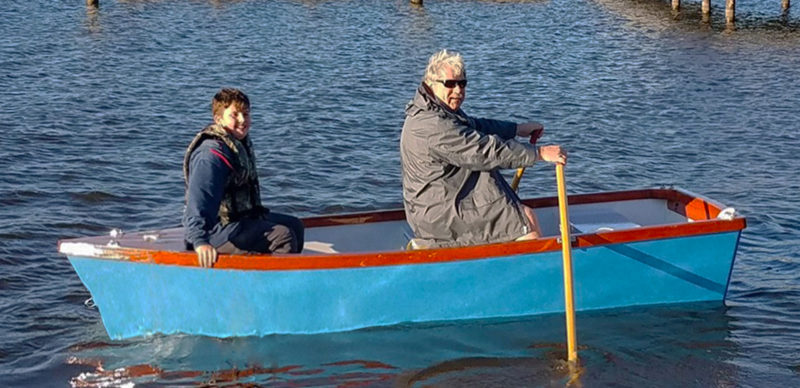 photographs by Mark Bonnette
photographs by Mark BonnetteBLUE PEARL is a boat that was conceived when grandson Henry said to his grandfather, “Let’s go fishing.”
Young Henry got lucky with his choice of grandparents. Grampy, known to the rest of the world as Mark Bonnette of Holland, Michigan, had a degree in industrial design, taught illustration at a university, worked in the aerospace industry, and was the director of design in the marine industry for 7 years and owner of his own design firm for the past 29 years. Henry liked to build things and Mark knew how to build them.
Whenever Henry came up with an idea for something to build, he’d tell his grandfather about it and at some point announce: “We need a blueprint, Grampy.” He would climb up on Mark’s drafting table and start to draw. Armed with the “blueprint,” grandson and grandfather would head for the shop. They have already built a pirate ship play structure, a Herman Miller slat bench knock-off for Henry’s mom, a toy box, and an assortment of swords, shields, and other weaponry.
One day, Henry decided he’d like to go fishing, and when Mark pointed out they didn’t have a boat, naturally Henry said, “Well, let’s build one.” The conversation led to setting the design criteria. Henry came up with seats for the two of them, an anchor, oars, and a motor. Mark had his own set of criteria. The boat had to be small enough to build in the garage, and the project could not require expensive tools or materials. Plywood would fit the budget and speed the construction, though perhaps not enough to meet Henry’s projection of having the project wrapped up from start to finish in a single weekend.
Mark set the length at 12′. The bottom would span 4′, no wider than of a sheet of plywood, and the sides would be constrained by the 24″ width of a half sheet. He created plans on an AutoCAD program and, after completing the drawings, made a cardboard scale model. The pieces of the model went together well and gave the green light for buying materials for the full-scale boat.
A bill of materials for 10 sheets of 1/4″ plywood and two sheets of 3/4″ plywood (for cradles, seats and bulkheads) plus clear pine lumber came to about $300, doubled to $600 to account for other supplies and incidentals. That was more than Henry’s allowance could cover, so Mark stepped in to be the project’s financier.
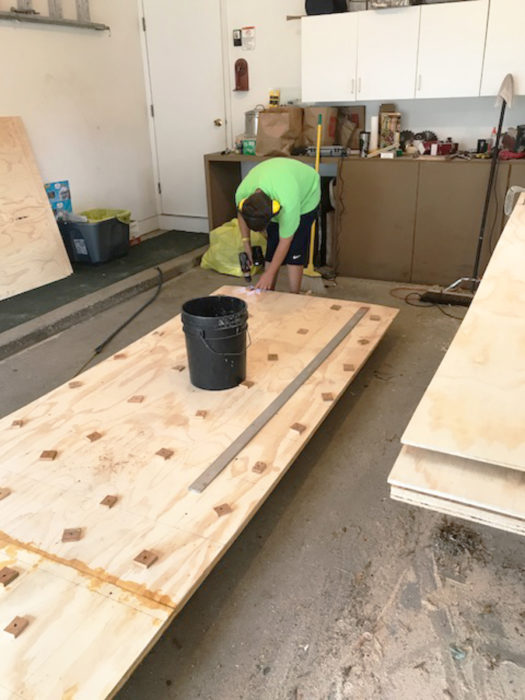
Henry favored using the cordless drill, so he was tasked with removing all of the screws and pads that held the three-layer laminated bottom to the curve of the building cradle.
The boat took shape from the bottom up. Three panels of 1/4″ plywood, each scarfed together from a sheet and a half, were epoxied together, one on top of the other, and temporarily screwed to a cradle shaped to give the bottom its stem-to-stern curve. After the epoxy had cured, the screws were removed and the bottom cut to shape with a saber saw. That power tool made Henry a bit anxious; he was more comfortable with the cordless drill and took charge of removing the screws, though he was afraid all of the holes left behind would sink the boat.
The sides were also composed of three layers of 1/4″ plywood. After the first layer was attached to the stem, transom, and bulkheads, Mark mixed a pot of epoxy and from that moment on, the clock was ticking. It took both grandson and grandfather working together to spread the great expanse of epoxy, position the next side panel, and drive the screws to pull the plywood panels together. Henry got his first taste of a job that demands focus, quick action, and working without a break until the task was complete.
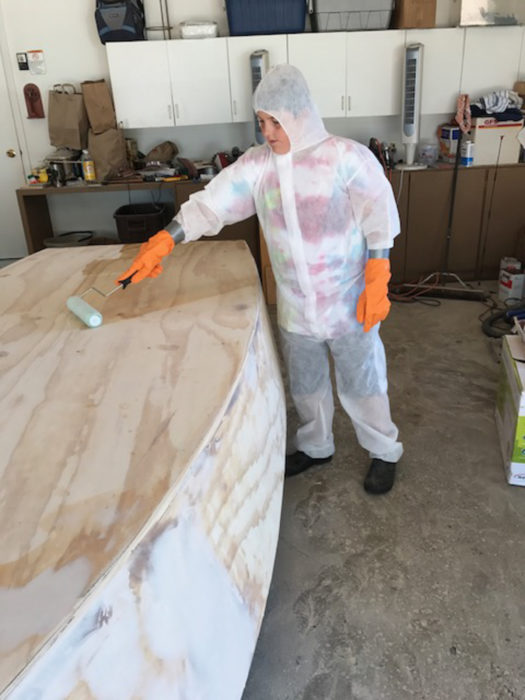
Decked out with protective clothing, Henry could roll epoxy on the hull without ruining his tie-dye T-shirt or shorts.
With the all of the pieces assembled, the project looked like a boat, and Henry thought the end was close at hand: Throw on some paint, and it’s fishin’ time. Mark, having designed mahogany runabouts for Grand Craft, had a different view of the work remaining: a stainless cutwater, transom straps, mahogany chine boards, and on and on. One of Mark’s friends offered him some good advice: “What are you thinking? ’Glass it!”
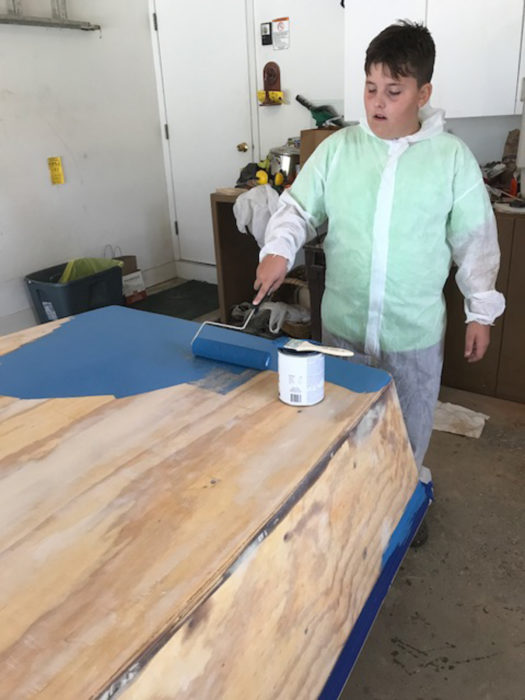
Henry’s first idea for a color scheme involved all the colors of the rainbow, but he changed his mind and chose blue, all the better for sneaking up on fish.
For Mark, fiberglassing meant blowing the materials cost estimate out of the water. For Henry, it meant forced labor dictated by epoxy pot life. After seemingly endless rounds of squeegeeing and sanding, he decided that a career laminating fiberglass or boat finishing wasn’t going to be in his future.
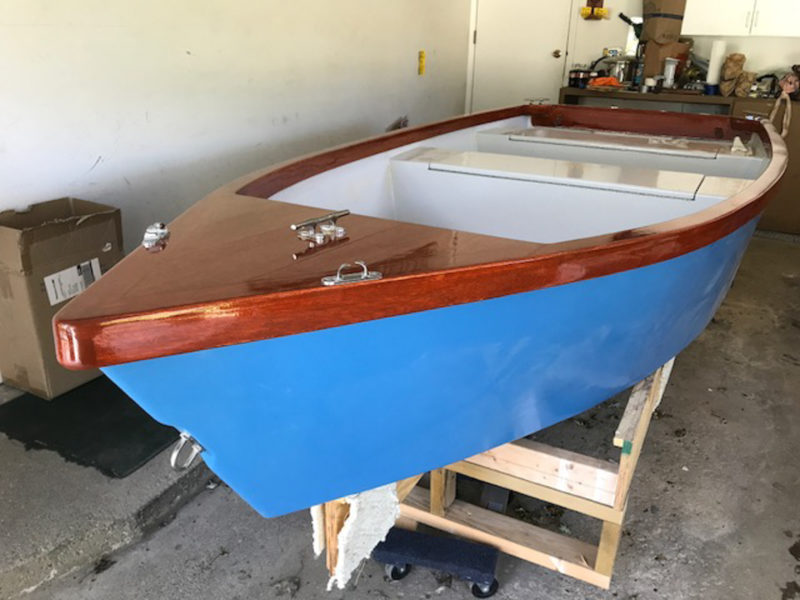
Grandfather Mark decided even a little boat meant for fishing deserved a touch of class and went for some mahogany, finished bright.
When the ’glasswork was done, Mark gave into his runabout inclinations and added mahogany gunwales and foredeck, all finished bright. But he gave his grandson the choice of color for the paint for the rest of the boat. Henry decided that “rainbow” would look good. Mark thought “great, how am I going to pull that off,” but when the two went to the marine-supply store, Henry took a look at the color chart and, much to Mark’s relief, chose “blue, that way the fish won’t see us coming.”
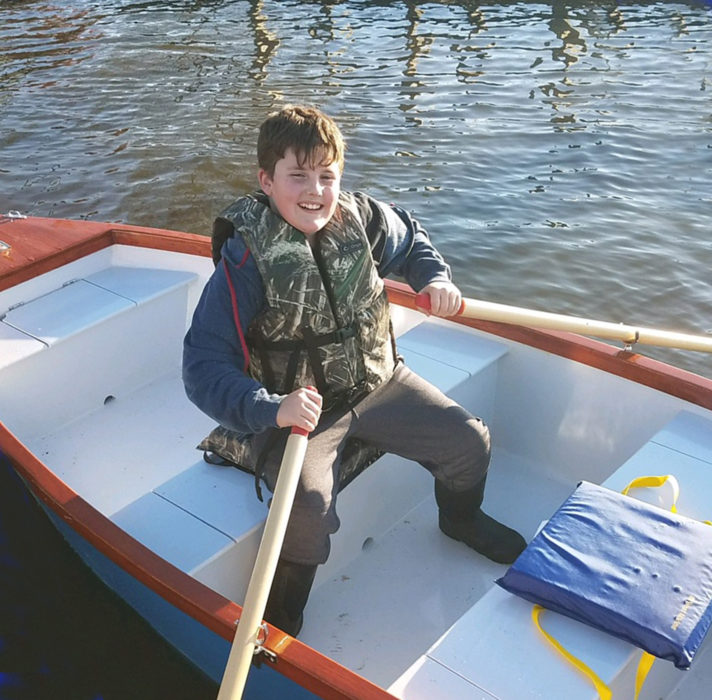
Young Henry saw his grand plan through to a successful completion.
BLUE PEARL was launched late in the fall, more than two months over Henry’s projected timetable and a couple of thousand dollars over Mark’s estimated budget, but the bond between a grandfather and grandson is worth every dollar and every hour spent together.![]()
Have you recently launched a boat? Please email us. We’d like to hear about it and share your story with other Small Boats Monthly readers.

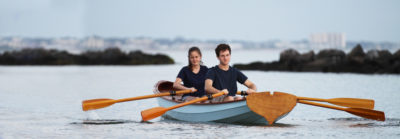


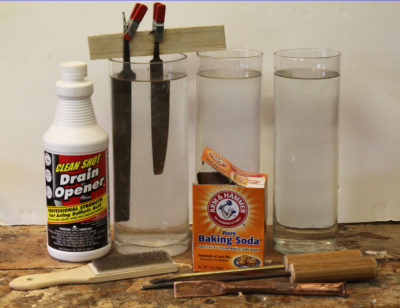
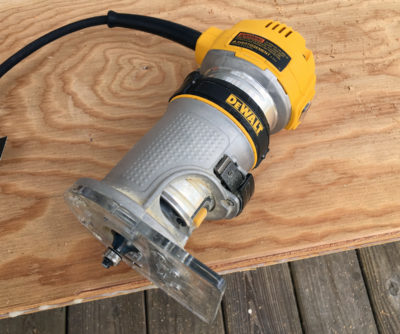
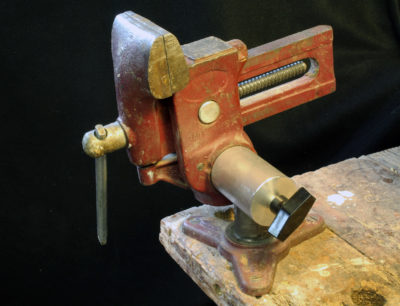
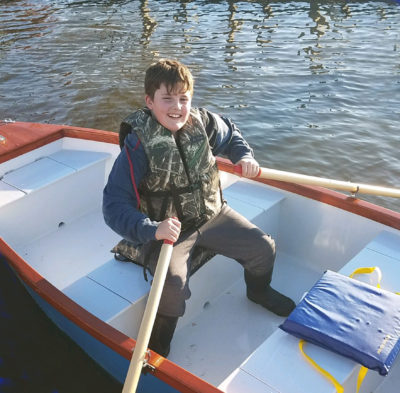
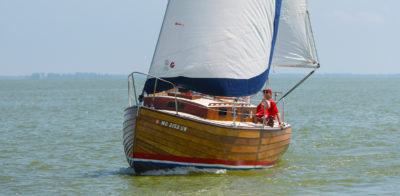
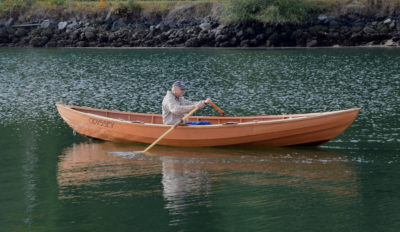

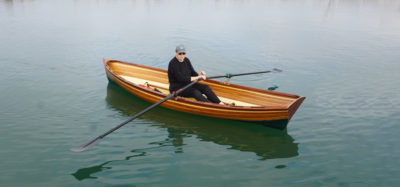
Nice boat to mess about in, fun project with lifetime memories.